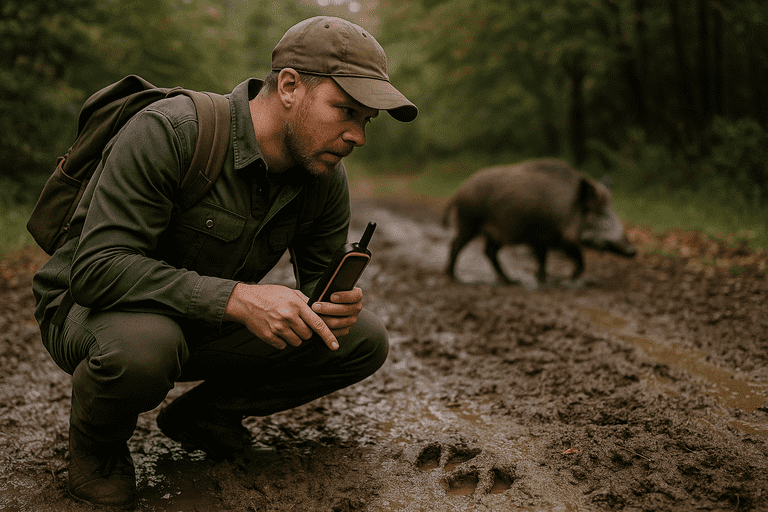Tracking wild pigs requires a combination of skill, patience, and an understanding of animal behavior. These animals are elusive, intelligent, and capable of adapting to various environments. Hunters, wildlife researchers, and landowners all have different reasons for pursuing them, yet the strategies remain similar across use cases.
Unlike domestic pigs, wild pigs are extremely cautious and tend to move under cover. For instance, they often travel at night or during the early morning to avoid human contact. Therefore, anyone interested in tracking wild pigs must learn to read subtle signs, such as disturbed soil, hoofprints, and broken vegetation.
Wild Life Shelter: A Haven for Displaced Animals
In addition, it’s essential to use all available tools and techniques. These include visual cues, trail cameras, GPS systems, and scent analysis. Combining modern technology with traditional tracking methods increases your chances of success. Moreover, understanding their feeding habits and movement patterns provides a tactical advantage in the field.
Essential Gear for Tracking Wild Pigs
When preparing for a trip focused on tracking wild pigs, the right gear can make all the difference. A high-quality pair of binoculars, for instance, allows you to spot pigs from a distance without alarming them. In addition, you’ll need waterproof boots, rugged clothing, and gloves to navigate dense underbrush comfortably.
A GPS device or a smartphone app with topographical maps also proven invaluable. It helps you track your own path, mark fresh signs of activity, and avoid getting lost in unfamiliar terrain. Furthermore, carrying trail markers such as flagging tape can guide you back if needed.
Moreover, it’s a good idea to pack lightweight snacks, plenty of water, and a first aid kit. Being well-equipped reduces stress and keeps you focused on your tracking objectives. Therefore, investing in the right gear increases both safety and success during your outing.

Identifying Signs
The key to successful tracking wild pigs lies in the ability to recognize and interpret the signs they leave behind. Look for hoofprints first—they are often cloven and can be differentiated from deer or cattle with careful observation. In muddy or soft ground, these tracks become especially clear.
In addition, disturbed soil or rooting patterns are telltale signs. Wild pigs use their snouts to dig for food like roots, insects, and fungi. Therefore, patches of torn earth or overturned leaves may indicate recent activity. You might also spot wallows, which are shallow muddy depressions where pigs cool off during hot days.
Furthermore, scat analysis provides valuable information. By examining droppings, you can estimate the pig’s size, diet, and how long ago it passed through. Hair caught on fences or tree bark can confirm the presence of wild pigs in the area. Combining multiple signs improves accuracy and builds a stronger case for targeted tracking.
Understanding Pig Behavior and Movement Patterns
Understanding behavior is essential when tracking wild pigs. These animals often follow specific routines, especially when food sources remain consistent. For example, they may return to the same feeding area night after night, making it easier to predict their movements.
In addition, wild pigs tend to move in small groups known as sounders, usually led by a dominant female. Knowing the structure and habits of these groups helps you determine where and when to set up observation points. Therefore, studying behavioral patterns increases the efficiency of your tracking efforts.
Why Wild Canine Rescue Matters for Ecosystem
Pigs also rely heavily on their sense of smell, which means wind direction becomes crucial. Always approach from downwind to avoid detection. Moreover, they tend to avoid open areas during daylight hours, favoring cover like thickets, forests, or dense grasslands.
By aligning your strategy with their behavior, you’ll maximize your chances of a successful encounter. Preparation, observation, and knowledge go hand in hand in mastering this complex pursuit.

Using Trail Cameras
Trail cameras are a valuable asset when tracking wild pigs over time. Placing them near suspected feeding or watering areas allows you to monitor pig activity without disturbing their routines. For instance, if a group regularly appears around dusk, you’ll gain critical insights about timing.
In addition, many cameras offer motion detection and infrared capabilities. These features enable clear night footage, which is essential since wild pigs are mostly nocturnal. Therefore, you can collect round-the-clock data to refine your approach.
Furthermore, reviewing trail camera footage helps validate signs found on the ground. If hoofprints and rooting patterns match the camera’s timestamp, you gain a fuller picture of activity in that area. With consistent monitoring, you can identify entry and exit routes as well as peak activity windows.
Why Wild Canine Rescue Matters for Ecosystem Stability
When used strategically, trail cameras become your second set of eyes—recording information you would otherwise miss in real-time tracking scenarios.
Mapping and Navigating Pig Territories
Creating a map of pig activity in your area is another key step in tracking wild pigs. Start by marking signs like fresh tracks, rooting sites, and water sources. Over time, patterns will emerge that highlight primary movement corridors.
In addition, using GPS devices or smartphone apps allows for precision tracking and location tagging. For instance, you can record when and where each sign was found, then cross-reference with trail camera data. Therefore, your tracking strategy becomes data-driven and evidence-based.
Furthermore, it helps to overlay weather data and moon phases onto your maps. Wild pig activity often fluctuates with environmental conditions. By doing so, you gain a predictive edge that fine-tunes your tracking schedule and location choice.
Mapping is not just for orientation—it’s a tool for building a comprehensive picture of wild pig territory and behavior over time. It turns guesswork into informed action.
Ethical Considerations When Tracking Wild Pigs
While tracking wild pigs is often tied to population control or hunting, ethical considerations should always be a priority. First and foremost, respect private property boundaries. Always seek permission before entering land that isn’t yours.
In addition, use humane tracking and handling methods, especially when trapping is involved. Avoid causing unnecessary stress or harm to animals. Therefore, studying local regulations and best practices ensures your methods remain compliant and respectful.
Moreover, consider your impact on the broader ecosystem. Disturbing habitats or unintentionally stressing other wildlife can lead to unintended consequences. Taking a conservation-minded approach helps protect the integrity of the land and its inhabitants.
Ethical tracking builds credibility, supports sustainability, and sets an example for others in the community. Always prioritize knowledge, safety, and respect in your fieldwork.

Safety Tips While Tracking Wild Pigs
Safety should always be at the forefront when tracking wild pigs. These animals may appear shy, but they can become aggressive when threatened. Therefore, staying alert and maintaining distance is essential, especially when dealing with larger boars or a protective sow with piglets.
In addition, always inform someone of your location and estimated return time before heading into the field. Carrying a two-way radio or a phone with GPS can be a lifesaver in remote areas. Having a partner also increases safety and allows for shared observation, which improves efficiency.
Moreover, pack protective gear such as gloves, long sleeves, and eye protection to guard against thorns, ticks, and other hazards. First aid knowledge is just as important as a well-stocked kit. Knowing how to respond to injuries or snake bites can make a critical difference in emergencies.
Ultimately, a thoughtful and cautious approach ensures you focus on your tracking goals without unnecessary risk. Safety doesn’t slow you down—it empowers you to stay sharp and prepared throughout the entire process.
Tracking Wild Pigs in Different Environments
Tracking wild pigs requires adapting your strategy to various landscapes. In forests, the dense vegetation demands slow, deliberate movement and sharp attention to signs like snapped twigs or disturbed leaf litter. In contrast, open fields may offer easier visibility but less cover for approach.
For instance, in swampy or marshy areas, wild pigs leave deeper tracks and wallows become more obvious. However, the terrain also becomes more challenging, requiring waterproof gear and careful footing. In arid regions, signs may include dust baths, dry scat, and subtle soil disturbances.
Each environment presents unique challenges and advantages. Therefore, understanding the ecosystem improves your ability to read terrain-specific clues. In addition, being familiar with native plants and other animal tracks helps you distinguish pig activity from other wildlife.
By tailoring your approach to the environment, you enhance accuracy and efficiency. Mastering multiple terrains is a skill that develops with time, observation, and persistence.
Legal and Regulatory Aspects of Tracking Wild Pigs
Before you begin tracking wild pigs, it’s important to understand the legal landscape. Many regions classify wild pigs as invasive species due to their destructive impact on agriculture and ecosystems. Therefore, laws often permit year-round hunting or removal, but regulations vary widely.
For example, some states require a license for tracking or trapping, even on private land. In addition, there may be restrictions on the types of weapons or traps you can use. Always consult local wildlife authorities to stay informed and compliant.
Moreover, public lands may have different rules from private property. Permits, reporting requirements, or designated hunting zones might apply. Ignorance of the law can lead to hefty fines or legal trouble, so preparation is crucial.
Being aware of your legal responsibilities protects both you and the environment. Ethical and lawful tracking builds a positive reputation and helps preserve access for future wildlife enthusiasts.
Final Thoughts on Tracking Wild Pigs Effectively
Tracking wild pigs is both an art and a science. It requires keen observation, strategic planning, and respect for the animals and the environment. Whether you’re a hunter, researcher, or land manager, the process offers challenges and rewards in equal measure.
By using tools like trail cameras, GPS mapping, and detailed sign analysis, you increase your chances of success. In addition, understanding pig behavior and adapting to different environments allows for smarter, safer tracking. Therefore, your experience becomes more efficient, ethical, and fulfilling.
Moreover, combining traditional tracking knowledge with modern technology leads to a more informed approach. Respecting laws, land, and life should always guide your actions in the field. The goal isn’t just to locate pigs—but to do so with purpose, skill, and care.
With continued practice and curiosity, anyone can become proficient in tracking wild pigs. The wilderness offers countless lessons, and each outing brings you closer to mastering this complex and rewarding pursuit.

